By HPG Info
•
July 15, 2025
How one leader can transform funky team dynamics (without saying a word) Last week, I shared research about how one negative leader can destroy team performance by 30-40%. This month, a campus president I work with experienced the flip side firsthand. During a contentious budget meeting, her executive team was fracturing. One VP was openly dismissive. Another had checked out completely. The CFO was getting defensive about every question. Then something remarkable happened. Her newest VP—quiet, unassuming, no formal authority over the others—leaned forward when the dismissive leader made a cutting remark. He smiled (not sarcastically), made eye contact, and said, "That's a really important concern. Help me understand what you're seeing that we might be missing." The room shifted. Within minutes, the defensive CFO was listening. The checked-out VP re-engaged. Even the dismissive leader found himself contributing constructively. One person changed everything. And research shows exactly why. The Outlier Group That Defied Everything In Will Felps' "bad apple" experiment that I shared last week, there was one group that thrived despite having a planted saboteur trying to destroy their performance. Nick, the saboteur, was baffled: "This group felt really different to me," he reported. "It was mostly because of one guy." That person was Jonathan—a thin, curly-haired young man with a quiet voice and an easy smile. While Nick systematically tried to derail the group with negativity, Jonathan's team remained attentive, energetic, and produced high-quality results. Here's what made this extraordinary: Jonathan didn't seem to be doing anything at all. "A lot of his really simple stuff is almost invisible at first," Felps observed. When Nick would start being aggressive, Jonathan would lean forward, use open body language, laugh and smile—never in a contemptuous way, but in a way that "takes the danger out of the room." Then came the pivot: Jonathan would ask a simple question that drew others out: "Hey, what do you think of this?" Sometimes he'd even ask Nick directly: "How would you do that?" The result? Even Nick, almost against his will, found himself being helpful. The Invisible Leadership That Changes Everything MIT's Human Dynamics Lab discovered why Jonathan's approach was so powerful. Using devices called "sociometers," they tracked the micro-interactions of hundreds of teams and found something revolutionary: You can predict team performance by focusing on how people interact, rather than what they say. Jonathan was unconsciously mastering what researchers call "belonging cues"—micro-signals that answer the ancient questions always glowing in our brains: Are we safe here? What's our future with these people? Are there dangers lurking? Jonathan's belonging cues had three qualities: Energy : He invested fully in each exchange Individualization : He treated each person as unique and valued Future orientation : He signaled the relationship would continue These cues sent one powerful message: "You are safe here." The Neuroscience Behind the Magic When someone receives belonging cues, a remarkable phenomenon occurs in the brain. The amygdala—our primeval danger-detection system—literally switches roles. Instead of scanning for threats, it transforms into what NYU neuroscientist Jay Van Bavel calls "an energetic guide dog" focused on building social connections. Brain scans reveal the moment: "The whole thing flips," Van Bavel says. "It's a big top-down change, a total reconfiguration of the entire motivational and decision-making system." Translation for leaders: Simple safety behaviors unlock the cognitive capacity your team needs for breakthrough thinking. When Belonging Beats Billions: The Google Story In the early 2000s, the smartest money in Silicon Valley was betting on Overture to dominate the internet advertising market. They had the brilliant founder, the resources, and a $1 billion IPO. Google was the underdog. The turning point came on May 24, 2002, when Google founder Larry Page pinned a note in the company kitchen. Three words: "These ads suck." Jeff Dean, a quiet engineer from Minnesota, saw the note while making a cappuccino. He had no reason to care—he worked in search, not advertising. However, something about the culture compelled him to dive in anyway. What happened next was extraordinary: Dean worked through the weekend, sent a fix at 5:05 AM Monday, and single-handedly unlocked the problem that made Google's AdWords engine dominant. The breakthrough: Dean's fix boosted accuracy by double digits. Google's profits went from $6 million to $99 million the following year. By 2014, AdWords was generating $160 million per day. But here's the strangest part: Dean barely remembered it happening. "It didn't feel special or different," he said. "It was normal. That kind of thing happened all the time." Why Google Won and Overture Lost Google didn't win because it was smarter. It won because it was safer. While Overture was "hamstrung by infighting and bureaucracy" with "innumerable meetings and discussions," Google was what researchers call "a hothouse of belonging cues." Google's belonging signals: Larry Page's technique of igniting whole-group debates around tough problems No-holds-barred hockey games where no one held back fighting founders for the puck Wide-open Friday forums where anyone could challenge leadership Small building with high proximity and face-to-face interaction The pattern mirrors exactly what MIT found drives team performance: Everyone talks and listens in roughly equal measure High levels of eye contact and energetic gestures Direct communication between all members, not just with the leader Back-channel conversations and side discussions Members who explore outside and bring information back The Hidden Cost of Hoping Culture Will Fix Itself Every day you wait for someone else to create belonging cues costs you: Faculty who disengage because they sense leadership division Students who suffer when initiatives fail due to leadership dysfunction Community trust that erodes when leadership appears fractured The brutal reality: Just as one bad apple can destroy performance in 30 seconds, one person creating belonging cues can transform the entire dynamic just as quickly. The question isn't whether your team needs a Jonathan. The question is: Will you become one? From Toxic to Transformative: The Belonging Framework ❌ The Typical Approach (Actually Destructive): Hope the negative dynamics burn themselves out Cabinet scenario: Your resistant executive team member makes dismissive comments during strategic planning. Other leaders start disengaging. You address it privately, but the group dynamic doesn't change. Result: Good initiatives die. High-performing leaders start looking elsewhere. Strategic momentum stalls. ✅ The Breakthrough Approach (Game-Changing): Create belonging cues that transform resistance Same scenario, different response: When the resistant leader makes a dismissive comment, you lean forward, make eye contact, and say, "You're raising something important—what am I not seeing here?" Then pivot to the group: "How do the rest of you see this?" Result: Resistance becomes strategic information. The team stays engaged. Opposition transforms into collaborative problem-solving. The Simple Signals That Change Everything Research shows belonging cues work through tiny, consistent signals. Here are the ones that matter most: Physical proximity and positioning: Sit in circles when possible Lean forward during difficult conversations Make frequent eye contact Communication patterns: Keep contributions short and energetic Ask questions that draw others out Listen intently and respond to what you hear Energy and attention signals: Give people your full presence Thank individuals by name for contributions Use humor (not sarcasm) to defuse tension The key insight: These aren't "soft skills"—they're performance drivers that literally rewire team dynamics. Transform Any Team Dynamic Starting Today The Belonging Cue Assessment: Step 1: Record your next team meeting (audio only) Step 2: Count how many times you create vs. destroy belonging cues Step 3: Notice the team's energy level during each type of interaction Three Daily Practices: Lean in when others lean back from conflict Respond to resistance with curiosity: "What am I missing here?" Create micro-connections before tackling difficult topics The Jonathan Protocol for Your Next Team Meeting: When someone becomes defensive, physically lean toward them Respond with genuine curiosity instead of defensiveness Pivot to include the whole group: "What do others think?" Remember: Your body language and tone matter more than your words Ask the resistant person directly: "How would you approach this?" The Choice That Defines Breakthrough Leadership You can wait for culture to improve, or you can become the person who creates it. You can hope toxic dynamics will resolve themselves, or you can master the belonging cues that prevent them. You can manage resistance, or you can mine the wisdom hidden inside it. You cannot do both. The most effective leaders I work with understand that being "the good apple" isn't about being nice—it's about being strategic. They've discovered that belonging cues aren't touchy-feely—they're the foundation of cognitive performance. Because here's what the research proves: Belonging is not "emotional weather"—it's the foundation on which strong culture is built. And one person really can save everything. But only if they understand that transformation happens through steady signals of safety, not grand gestures of authority. The Hidden Factor Behind Breakthrough Teams Here's what I've learned from studying hundreds of leadership teams: The difference between leaders who create belonging and those who spread toxicity isn't just individual awareness—it's about Team Intelligence (TQ) . When teams develop high TQ, they naturally create the belonging cues that prevent toxic dynamics and amplify positive energy. They learn to respond to resistance like Jonathan did—with curiosity that transforms opposition into contribution. The TQ Advantage: 45% faster recovery from team conflicts 38% higher team member engagement and retention 42% more breakthrough solutions achieved collaboratively The breakthrough teams I work with understand that you don't need everyone to be a Jonathan. When teams develop TQ, belonging cues become their default mode of interaction. Ready to Become the Good Apple Your Team Needs? Stop waiting for someone else to create the culture you want. Start building the Team Intelligence that makes belonging cues your team's natural language. The first step is understanding your team's current TQ. In just 5 minutes per team member, you can discover: Where toxic dynamics are most likely to emerge Which cognitive perspectives naturally create belonging cues How to transform your most challenging team members into contributors Discover Your Team Intelligence → https://www.higherperformancegroup.com/team-intelligence-assessment




